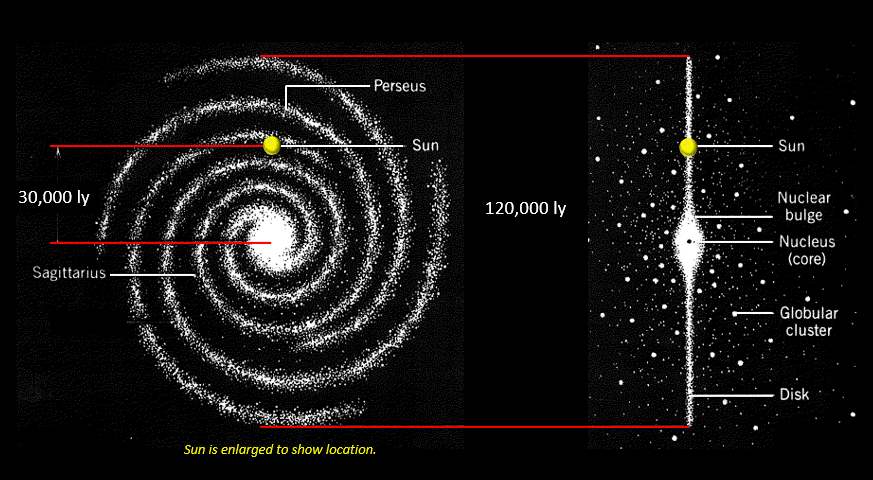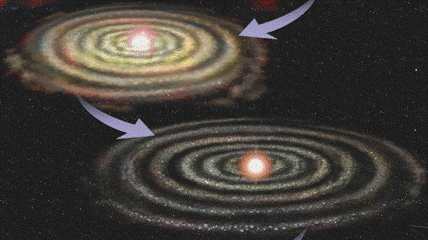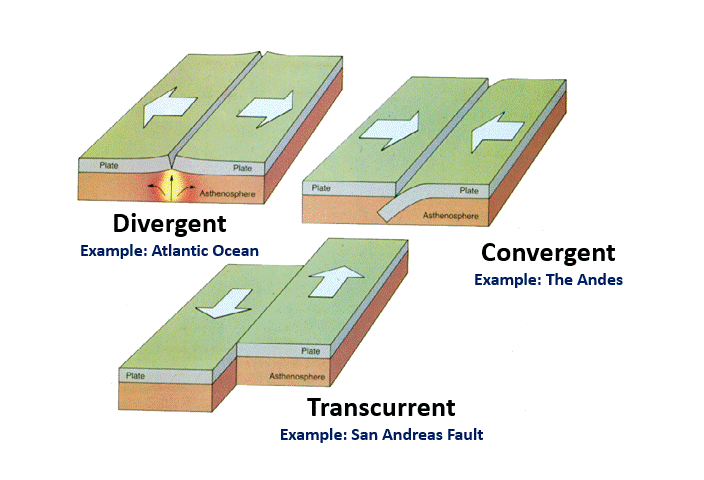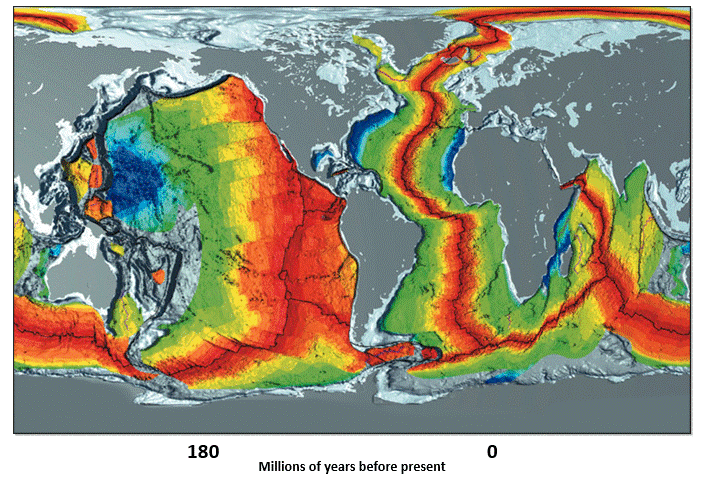
The universe is big, really big. Wherever we look, we see galaxies. Galaxies are defined by the stars that make them up, and planets orbit those stars. We know this because we observe space with a wide variety of technologically advanced telescopes.
Science allows us to make sense of all scales of nature. Everything that we know of in the universe is made of differing proportions of the known 118 types of atoms as described in a Periodic Table of Elements.

The Big Bang is time zero. Time zero is when the universe formed. Jaing et al. (2020) reported the most distant galaxy (GN-z11) ever seen in the universe, is 13.4 billion light years away, meaning that it formed 13.4 billion years ago. GN-z11 formed only 420 million years after the Big Bang. For comparison, the sun and our solar system, formed 4.6 billion years ago.
Considering that light travels roughly six trillion miles per year (that distance is known as one light year) then 13.4 billion multiplied by 6 trillion equals a really big number. In other words, GN-z11 is really far away and really old. When observing galaxies that are only two million light years away, it takes two million years for light to travel across that distance to our eyes, so we see what that galaxy looked like millions of years ago. A telescope is a form of a time machine.


Conselice et al. (2016) estimated that there are approximately two trillion galaxies spread out across the universe, with each galaxy having about 300 billion stars, and each galaxy likely has a black hole at its center. The sun — our star — is only one star, in one galaxy, known as the Milky Way galaxy (a barred spiral galaxy). The Milky Way galaxy is 120,000 light years across, and the sun is located about 30,000 light years from the center of this galaxy.

Exoplanets are planets that orbit other stars in the Milky Way Galaxy. The first exoplanets were discovered in 1995. So far we have identified over 4000 exoplanets. Di Stefano et al. (2020) may have evidence for identifying the first extragalactic planet in the Whirlpool galaxy (a planet orbiting a star in another galaxy). Zackrisson et al. (2009) argues that planets should be found orbiting most stars. It is likely that 700 quintillion terrestrial exoplanets are likely to exist across the observable universe.

Everywhere we look we find planets forming around young stars. The rings eventually coalesce to become planets. Planets started forming more than ten billion years ago, yet the planets in our solar system formed only 4.6 billion years ago.

Planets form when stars are formed in nebulae; these star-forming regions are found throughout the universe. Stars generate energy (heat) by fusion. Planets that form closer to a star are subject to higher temperatures than those forming at greater distances. Therefore, different chemicals condense at different distances from the sun.

The bulk chemistry of a planet is controlled by its distance from the star. The large, low density, gas planets are found farther away from the sun where the temperature is cooler and the gases do not burn off. The smaller, denser, rocky planets, like Earth, form closer to the sun because rocks have a higher melting point than gases. All planets in a solar system form at approximately the same time.

Earth formed as gravitational attraction forced all of the material in the third ring from the sun to coalesce. During this early accretionary phase of homogenous material the protoplanet grew larger by sweeping up all of the material in the third ring; the same is true for all other rings. As a result of the accretion of homogenous materials, the early Earth heated up past the melting point of iron, the dense iron and magnesium atoms sank toward the center, and the less dense silicon and oxygen rose toward the surface. This process, known as convection, led to a layered Earth and initiated plate tectonics, volcanism, and earthquakes.

Earth’s brittle outer layer, the lithosphere, can be described by approximately 20 individual pieces, known as plates, that move relative to one another. The lithospheric plates move because they ride on a convecting mantle. The boundary between plates is regarded as plate boundary — plate boundaries are major fault lines where earthquakes are common.

Divergent plate boundaries produce oceans, convergent plate boundaries produce mountains, and transcurrent plate boundaries create large faults. Most of the earthquakes define plate boundaries and most of the volcanoes occur at convergent plate boundaries; some volcanoes occur as hot spots away from plate boundaries. Plates move 2-20 cm per year — about as fast as one’s fingernails grow.
The mid-Atlantic spreading ridge is highlighted below. Note how the east coasts of North America and South America, fit like jigsaw puzzle pieces with the west coasts of Europe and Africa.

Ocean floor is always being created at mid-ocean ridges, and consumed in subduction zones at convergent plate boundaries. The ocean floor, relative to the continents, is very young. The oldest ocean floor is 180 million years old, whereas the oldest continental rocks are 4.4 billion years old.

Science allows us to decipher nature. We now know that Earth is one planet in our solar system. The sun is only one star in the solar interstellar neighborhood. These local stars are no farther than 65 light years away. We have only been broadcasting on radio for about 65 years, so our radio signals have only traveled 65 light years away. That is not very far at all considering our place in the the Milky Way galaxy — let alone our position in Laniakea.





